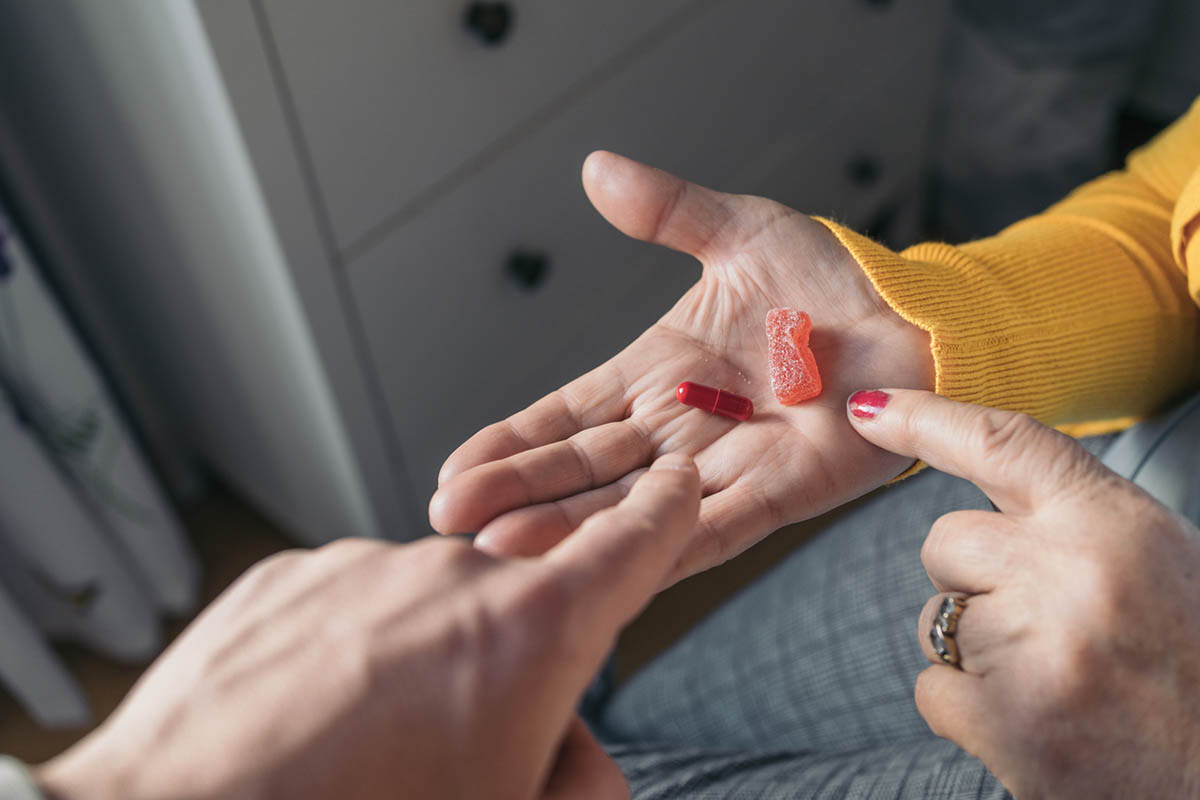Amphetamine Use as a Risk Factor for Low-Dose Risperidone-Induced Acute Dystonia: A Case Report
To the Editor: Antipsychotic-induced acute dystonia is defined as sustained abnormal postures or muscle spasms that develop within 7 days of starting or rapidly raising the dose of an antipsychotic medication.1 Risk factors include young age, male sex, previous instance of acute dystonia, use of psychoactive substances, rapid titration, and use of high-potency antipsychotics.2 Although second-generation antipsychotics (SGAs) have a lower risk than first-generation antipsychotics (FGAs) to induce acute dystonia, significant differences exist between SGAs in their ability to induce extrapyramidal symptoms.3,4 The following case report describes a young male patient abusing amphetamine who, shortly after initiating low-dose risperidone, developed acute dystonia that did not occur with olanzapine use.
Case report. Mr A, a 24 year-old man, was admitted because of paranoid delusional thinking and agitation following daily use of amphetamine. He had no other medical history. A few months earlier, he had been hospitalized in the exact same circumstances and was treated successfully with olanzapine 10 mg daily without presenting any motor anomalies. Olanzapine was prescribed after discharge from the hospital, but Mr A stopped the medication a few weeks later. When he was readmitted more than 4 months later, risperidone orally disintegrating tablet 2 mg was introduced at bedtime. The following morning, the patient developed a sensation of thick tongue, had difficulty swallowing his saliva, and experienced neck and jaw rigidity. No respiratory difficulty was noticed. Within 30 minutes following the administration of diphenhydramine 25 mg intramuscularly, the dystonic symptoms diminished and resolved completely within the next few hours. Risperidone was replaced by olanzapine 10 mg at bedtime, and complete resolution of the psychotic symptoms was obtained without recurrence of dystonic symptoms.
The exact pathophysiology of acute dystonia remains unknown but probably involves blockade of dopamine D2 receptors in the striatum. It has been proposed that by blocking serotonin 5-HT2 receptors, SGAs increase dopamine release by substantia nigra neurons in the basal ganglia, which would explain the lower risk of dystonic reactions compared with FGAs. Psychostimulant drugs, such as cocaine and amphetamines, are considered a precipitating factor for acute dystonia.5,6 Although these substances may initially enhance release of dopamine in the striatum,7 their long-term use is associated with striatal dopaminergic down-regulation.8 In our case report, amphetamine abuse appears to increase the risk of an acute dystonic reaction with risperidone but not with olanzapine. One could argue that the blood concentration of amphetamine had decreased by the time olanzapine was prescribed and this could reduce the risk of dystonia. However, on the first hospitalization the patient did not have a dystonic reaction when treated with olanzapine although he was taking similar quantity of amphetamine on a daily basis.
Although both risperidone and olanzapine have similar binding affinities to dopamine D2 and serotonin 5-HT2 receptors, only olanzapine has significant anticholinergic properties.3 In our patient, the addition of the anticholinergic drug diphenhydramine to risperidone significantly reduced the dystonic symptoms, suggesting that acetylcholine is involved in some way in the etiology of this motor side effect. In a recent study, patients at risk for acute dystonia used anticholinergic drugs more often when treated with risperidone than with olanzapine.9 Therefore, blockade of 5-HT2 receptors alone by an SGA may not be sufficient to prevent a dystonic reaction in high-risk patients. In our patient, the induction of dystonic symptoms by risperidone was not likely due to an increase in dopamine D2 blockade by risperidone, as dose equivalence studies suggest that risperidone 3 mg is equivalent to olanzapine 10 mg.10,11
This case report suggests that low-dose risperidone, but not olanzapine, can induce an acute dystonic reaction when amphetamine abuse is present. We propose that the anticholinergic activity of olanzapine, in addition to its serotonin 5-HT2 blockade, contributes to the lower risk of dystonic reaction compared with risperidone. Therefore, an SGA having both anticholinergic and anti-serotonin 5-HT2 activity might be a better choice to prevent acute dystonia in high-risk patients.
References
1. American Psychiatric Association. Diagnostic and Statistical Manual of Mental Disorders, Fourth Edition. Washington, DC: American Psychiatric Association; 1994.
2. van Harten PN, Hoek HW, Kahn RS. Acute dystonia induced by drug treatment. BMJ. 1999;319(7210):623-626. PubMed doi:10.1136/bmj.319.7210.623
3. Correll CU. From receptor pharmacology to improved outcomes: individualising the selection, dosing, and switching of antipsychotics. Eur Psychiatry. 2010;25(suppl 2):S12-S21. PubMed doi:10.1016/S0924-9338(10)71701-6
4. Rummel-Kluge C, Komossa K, Schwarz S, et al. Second-generation antipsychotic drugs and extrapyramidal side effects: a systematic review and meta-analysis of head-to-head comparisons. Schizophr Bull. 2012;38(1):167-177. PubMed
5. Potvin S, Blanchet P, Stip E. Substance abuse is associated with increased extrapyramidal symptoms in schizophrenia: a meta-analysis. Schizophr Res. 2009;113(2-3):181-188. PubMed doi:10.1016/j.schres.2009.06.010
6. Brust JC. Substance abuse and movement disorders. Mov Disord. 2010;25(13):2010-2020. PubMed doi:10.1002/mds.22599
7. Laruelle M, Abi-Dargham A, van Dyck CH, et al. SPECT imaging of striatal dopamine release after amphetamine challenge. J Nucl Med. 1995;36(7):1182-1190. PubMed
8. Martinez D, Broft A, Foltin RW, et al. Cocaine dependence and d2 receptor availability in the functional subdivisions of the striatum: relationship with cocaine-seeking behavior. Neuropsychopharmacology. 2004;29(6):1190-1202. PubMed doi:10.1038/sj.npp.1300420
9. Chan HY, Chang CJ, Chiang SC, et al. A randomised controlled study of risperidone and olanzapine for schizophrenic patients with neuroleptic-induced acute dystonia or parkinsonism. J Psychopharmacol. 2010;24(1):91-98. PubMed doi:10.1177/0269881108096070
10. Andreasen NC, Pressler M, Nopoulos P, et al. Antipsychotic dose equivalents and dose-years: a standardized method for comparing exposure to different drugs. Biol Psychiatry. 2010;67(3):255-262. PubMed doi:10.1016/j.biopsych.2009.08.040
11. Gardner DM, Murphy AL, O’ Donnell H, et al. International consensus study of antipsychotic dosing. Am J Psychiatry. 2010;167(6):686-693. PubMed doi:10.1176/appi.ajp.2009.09060802
Author affiliations: H×´pital Louis-H. Lafontaine, University of Montreal, Montreal, Quebec, Canada.
Author contributions: Dr Michaud: conception, organization, and execution of the project; writing of the first draft of the manuscript. Dr Landry: conception, organization, review, and critique of the manuscript.
Potential conflicts of interest: None reported.
Funding/support: None reported.
Published online: November 15, 2012.
Prim Care Companion CNS Disord 2012;14(6):doi:10.4088/PCC.12l01397
© Copyright 2012 Physicians Postgraduate Press, Inc.




